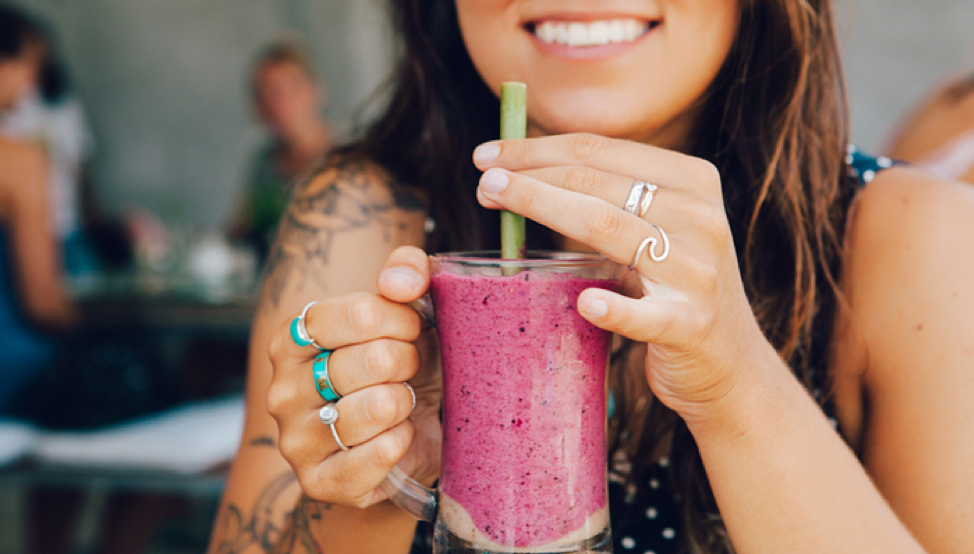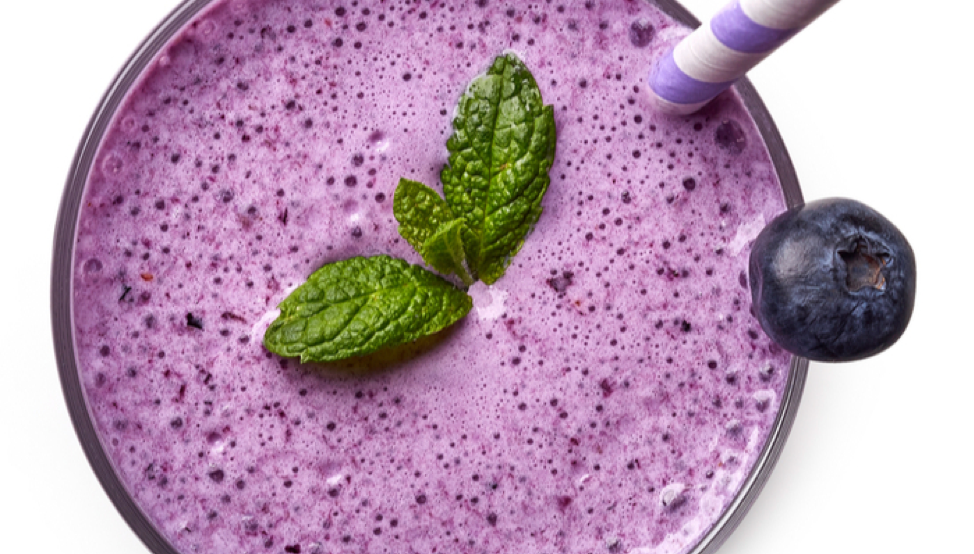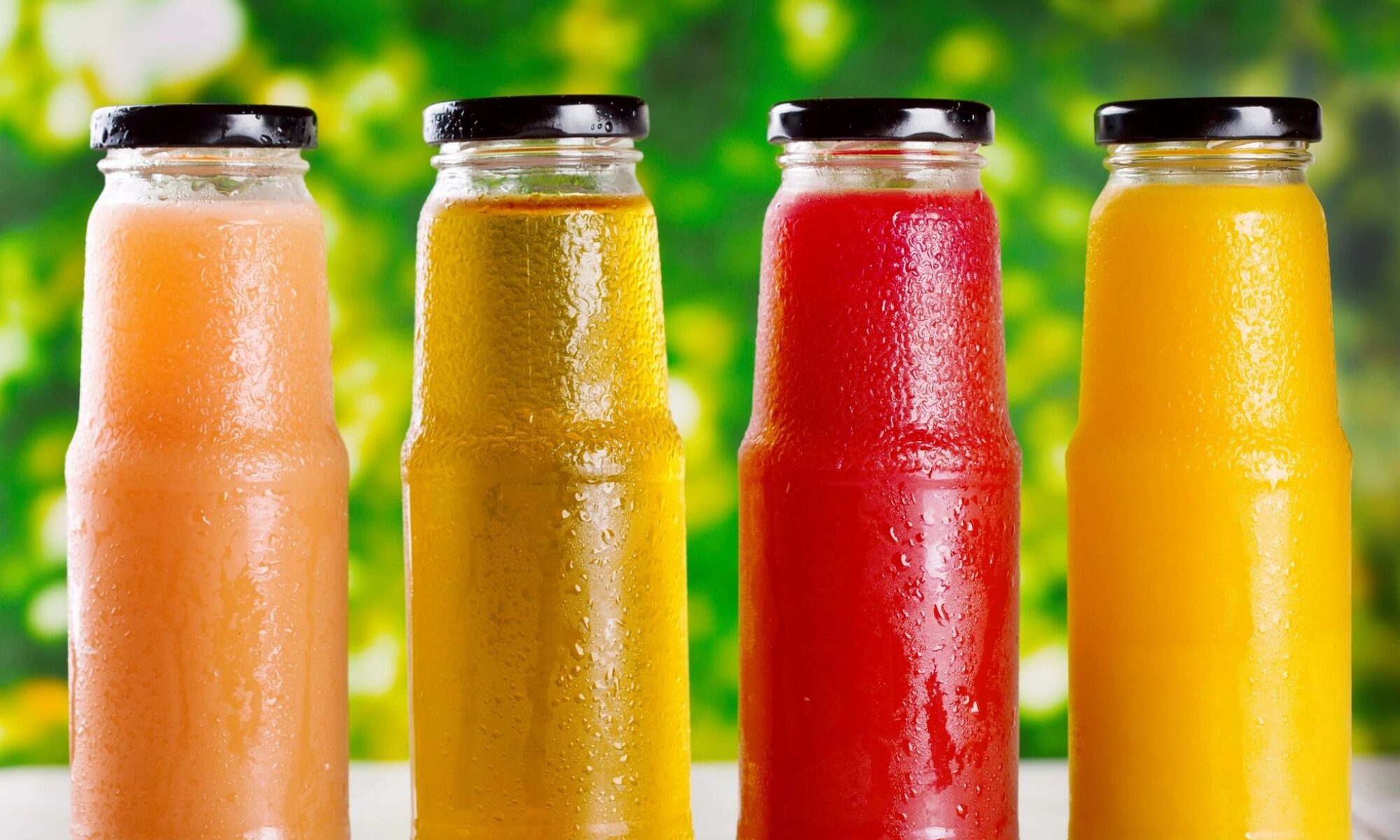
Well, we’ve already reached the sixth article in the series. The beverage industry is big and has a lot of different products that deserve to have their own piece. After the bit on energy drinks, it’s time to cover other sweet beverages that so many people around the world adore, some maybe too much! I am, of course, talking about the smoothie, the delicious drink both kids and adults love.
We’ll cover the origins and the history of the beverage, its development, where the industry is today, and of course, the most popular brands. Let’s begin.
What Is a Smoothie?
We already talked about juices in general, but smoothies and other similar drinks didn’t get their fair share. You should take a look at that article if you want to learn more about juices, but for now, we’ll concentrate on smoothies now.
The smoothie is in many ways a juice, but it’s also very unique, as well. It’s always made from either pureed raw fruits, vegetables, or even dairy products. With so many different foods existing in these categories, the variants of smoothies are almost endless. People tend to make their own types as well, including other products and creating something new and unique by simply mixing it all in a blender.
The smoothies we see today have evolved a lot, and they tend to include additional ingredients like sweeteners (sugar, honey, stevia), fruit juices, water, crushed ice, different powders, seeds, nuts, and more.
One main thing that connects all smoothies is that they are supposedly very healthy. However, that all depends on the ingredients being used. We’ll cover the health benefits of smoothies later on in the article.
The Origin of the Smoothie
As you can expect, due to the simplicity of the drink, smoothies have been around for centuries. Many cultures across the globe have been making pureed fruit drinks for ages, like the people of South America, for example.
The Indian subcontinent has its own form of a smoothie and has had it for a long time. It’s called Lassi, a yogurt-based blend that also uses water, spices, and often fruit. The mango-based sweet lassis are more like fruit infused milkshakes, which brings us to one thing that must be mentioned – milkshakes and smoothies are two distinct beverages that shouldn’t be grouped into one category, despite their apparent similarities. The main difference is in the fact that smoothies can be meal-replacements, as they are rich in vitamins and minerals, while milkshakes are more like deserts. Smoothies are often fruit and vegetable based while milkshakes are often ice cream based.
But I digress. Smoothies, as we know them today, were first made in the 1930s. The name smoothie came to be a few years earlier, but it wasn’t first used to describe the drink we know today. The word was only used to describe a person who is self-assured and suave, especially when communicating with the opposing sex.
The very concept of the smoothie we know today was accidentally created by a man called Julius Freed in the 1920s. He suffered from a sensitive stomach, and he found that a fresh orange juice that’s more bubbly and less acidic was something that he could enjoy. So he created Orange Julius, which is today one of the longest-running fruit drink makers in the world. As of 1987, Orange Julius is a subsidiary of Dairy Queen, which is a subsidiary of Berkshire Hathaway.
The Influence Blenders Had (and Still Have) on Smoothies
The first smoothies that followed were fairly simple. They only had fruit, fruit juice, and ice, but they were still very obscure, especially in the United States. Until the blender was first made, making smoothies was virtually impossible in America. In fact, the origin of the smoothie is closely tied to the origin of the blender. People were not really interested in smoothies before the blender – it was this device that made smoothies widely available to the masses.
The first blender was made by a Polish-American chemist, Stephen Poplawski, with his Stevens Electric Company in 1919. However, it was a simple drink mixer, and Fred Waring made the first real blender in 1937. The Waring Blendor (and no, that is not a spelling error) popularized the smoothie in the United States during the 1940s. Other blenders quickly followed, and they further spread the popularity of the drink. It’s important to mention the fairly recent Vita-Mix, a blender that genuinely revolutionized the smoothie industry. It was made to be powerful enough to grind all the ingredients (even raw vegetables and nuts) into a smooth paste, making it perfect for making smoothies.
Further Development of Smoothies
The first smoothies were, as we said, fairly simple. The leading marketing connected to them was simple, as well. Most smoothies were marketed as a tasty, refreshing beverage that can quench your thirst. They still had a ways to go before becoming the meal replacement beverage we know today.
Talking about healthy, the hippie culture had a significant influence on the evolution of the smoothie. In the 60s and 70s, the U.S. was witnessing a sort-of rebirth of vegetarianism and the rise of veganism. Hippies and others propagated healthy living and healthy diets. That made many turn to organic and natural products that would keep them healthy and fit.
That caused many businesses to start opening health food stores across the country, and these stores started selling blended fruit drinks.
Jack LaLanne, an American fitness and nutrition expert and motivational speaker, also had a significant influence in popularizing smoothies and other healthy juices. He is often dubbed as the Godfather of Fitness, which should help you understand how influential he was in the 50s, 60s, and 70s. He started promoting health and fitness before celebrities who are today well-known as the leading promoters. He was also the first person in the U.S. to open a gym and health food store. What’s more, he was the first to discover the weight loss meal replacement drink and created several smoothie recipes that many still use to this day.
The Smoothie King Franchise
When discussing the history and evolution of the smoothie, we cannot skip the Smoothie King franchise.
A man named Steve Kuhnau experimented with smoothie recipes for years, and in 1973 he finally made one that he could truly enjoy. You most likely think that he probably had a sensitive stomach like Julius Freed, but Steven was actually lactose intolerant. He wanted to drink something similar to milkshakes that many others around him were able to drink, so he invented his own drink. He mixed fruit, various nutrients and vitamins, and created a custom blend that is known to many today. The drink turned out to be very delicious, and it also regulated his blood sugar to an extent. He decided that his drink was a good business idea and that others should have a chance to enjoy it, so he created the Smoothie King company that still exists today.
He decided on the word smoothie, as his primary demographic were hippies, who already loved the health and fitness benefits these types of drinks provided. Plus, the term was already well-known among the hippie community and many others who loved similar health foods and drinks.
The first store was opened in 1989, and in 2003, the company went international. In 2012, it was acquired by a South Korean franchisee, who then popularized the drink in South Korea. As it was spreading across the United States, it eventually made the term smoothie a household word.
In 2018, the franchise opened its 1,001st store, and now it boasts revenues of almost half a billion dollars annually.
Other Popular Smoothie Brands
- Odwalla
The Odwalla company was established in 1980 as a seller of food bars, juices, and smoothies. The first Odwalla products were marketed as a way for people to break free from over-processed foods that exist everywhere.
The company expanded massively in the 1990s, but it suffered some losses when it was discovered that one of its batches was contaminated with E. coli. It took some time for the company to rehabilitate its brand. In 2000, they acquired Fresh Samantha, another juice and smoothie company. They soon shut down the Fresh Samantha brand and started selling everything under the Odwalla brand.
Odwalla was soon acquired by the Coca Cola company in its effort to move into the non-carbonated drinks industry. The Odwalla brand is still connected to its Superfood smoothie line of drinks.
- Naked Juice
The Naked Juice brand was born in America in 1983 as a company that makes juices and smoothies.
The brand started small but quickly expanded. Jimmy Rosenberg and David Bleeden created the first fruit juices with the Naked Juice name and sold them from home. As they expanded, their company reached massive heights, and their main rival became the industry leader Odwalla.
As Coca Cola had purchased Odwalla, it didn’t take long for its rival Pepsi to buy Naked Juice. The acquisition enabled Naked Juice drinks to be sold across the United States, Canada, and the U.K.
The company today has more than 20 different drinks, some of which are in juice form, while others are smoothies. All drinks are 100% fruit and vegetable drinks.
Besides these two and the other brand names we mentioned, there are plenty of other smoothie makers:
- Bolthouse Farms – known for carrot smoothies
- Dr. Smoothie Brands – known for smoothie powder mixes without artificial ingredients
- Jamba Juice Company – sells all sorts of fruit and vegetable smoothies, protein smoothies, and others
- Tropical Smoothie Café – sells different smoothies in more than 700 cafes across the United States
- Daily Harvest – one of the fastest-growing e-commerce brands that sells ready-to-drink smoothies
The smoothie industry today is quickly growing, mostly because of the growing popularity of healthy drinks and foods across the globe. The size of the industry is $150 billion and is expected to grow significantly in the following years.
I was lucky to serve as Vice President of Sales, Marketing, Distribution and Operations at Fresh Samantha/Odwalla and Vice President of Marketing at Naked Juice.

How Healthy Are Smoothies?
The supposed health benefits of the smoothie are directly related to what’s included in each specific smoothie.
Store-bought smoothies tend to have a lot of sugar and calories, as well. Many smoothies from popular brands we discussed here are so full of calories that they could be akin to a couple of chocolate bars.
The unfortunate truth is that these smoothies can be a substitute for meals only because they are large and contain a massive number of calories (often reaching the 1,000 mark).
All of that means that the best smoothies are the ones you make on your own. You need to try to stick to fruits and vegetables only, without adding sugars and fruits that have high sugar contents. However, don’t expect such smoothies to be completely satisfying. The very fact that they are liquids is enough to explain that they cannot be as fulfilling as solid foods. However, they will undoubtedly be very healthy, or as healthy as the ingredients in them are.
Key Takeaways
The history and evolution of the smoothie is a rich and interesting one. Pureed fruit mixes are as old as many cultures across the world, but the modern smoothie we know today is not.
However, as you’ve witnessed, in less than a hundred years, the smoothie industry has reached tremendous heights. From the humble beginnings of small house brands, the smoothies expanded as the blender was created. The hippie culture and health and fitness coaches popularized them, and the brands that followed made the smoothie a household name.
Today, the industry is continuing to grow at an extremely fast rate due to the renewed health and fitness craze we are witnessing. There’s no way to tell what will happen in the near or distant future, but we will be sure to continue following the trends. You should do the same, as that could help you create something of your own, maybe even as unique and popular as the brands we discussed here.
For further information about Cascadia Managing Brands, please go to www.cascadiafoodbev.com.
